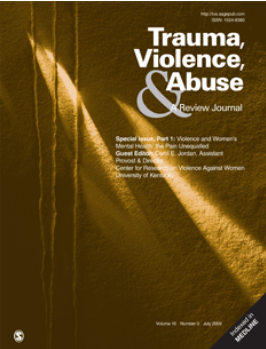Campus Sexual Violence Victimization and Perpetration Experiences in Racial, Gender Identity, and Sexual Orientation Minority Student Subpopulations: A Scoping Review
IF 5.4
1区 社会学
Q1 CRIMINOLOGY & PENOLOGY
引用次数: 0
Abstract
Research on campus sexual violence (CSV) victimization and perpetration has grown considerably in recent years; however, knowledge of the experiences of CSV among students within specific racial, gender identity, and sexual orientation subpopulations remains limited. The purpose of this scoping review was to (a) determine any documented differences in CSV prevalence rates among students based on race/ethnicity, sexual orientation, and gender identity, and (b) synthesize proposed mechanisms relating to these differences. A total of 37 studies published between 2004 and 2022 met our inclusion criteria, which included peer reviewed quantitative methodology, a U.S. higher education student sample, measures of CSV since entering college/university, and prevalence reports on CSV rates for racial, ethnic, sexual, and/or gender minority students. We found that cisgender women and gender-nonconforming students, sexual minority students, and students from some racial/ethnic minority groups experienced elevated rates of CSV victimization. However, we observed considerable variation in sampling procedures as well as victimization, perpetration, and demographic measures used in these studies. We discuss these findings and offer several explanations for the higher prevalence rates among minoritized student subgroups. We conclude with recommendations for future research.种族、性别认同和性取向少数族裔学生群体的校园性暴力受害和犯罪经历:范围综述
近年来,有关校园性暴力(CSV)受害和施暴的研究有了长足的发展;然而,对特定种族、性别认同和性取向亚群学生的 CSV 经历的了解仍然有限。本次范围审查的目的是:(a) 根据种族/民族、性取向和性别认同,确定学生中 CSV 发生率的任何有据可查的差异;(b) 综合与这些差异相关的拟议机制。2004 年至 2022 年间共发表了 37 篇符合我们纳入标准的研究,这些标准包括同行评审的定量方法、美国高等教育学生样本、自进入学院/大学以来 CSV 的测量方法,以及关于种族、民族、性取向和/或性别少数群体学生 CSV 发生率的流行报告。我们发现,顺性别女性和性别不一致学生、性少数群体学生以及某些种族/少数族裔群体学生的 CSV 受害率较高。然而,我们发现这些研究中使用的抽样程序以及受害、犯罪和人口统计学测量方法存在很大差异。我们对这些发现进行了讨论,并对少数族裔学生亚群中较高的受害率提出了几种解释。最后,我们对未来的研究提出了建议。
本文章由计算机程序翻译,如有差异,请以英文原文为准。
求助全文
约1分钟内获得全文
求助全文
来源期刊

Trauma Violence & Abuse
Multiple-
CiteScore
13.60
自引率
7.80%
发文量
131
期刊介绍:
Trauma, Violence, & Abuse is devoted to organizing, synthesizing, and expanding knowledge on all force of trauma, abuse, and violence. This peer-reviewed journal is practitioner oriented and will publish only reviews of research, conceptual or theoretical articles, and law review articles. Trauma, Violence, & Abuse is dedicated to professionals and advanced students in clinical training who work with any form of trauma, abuse, and violence. It is intended to compile knowledge that clearly affects practice, policy, and research.
 求助内容:
求助内容: 应助结果提醒方式:
应助结果提醒方式:


